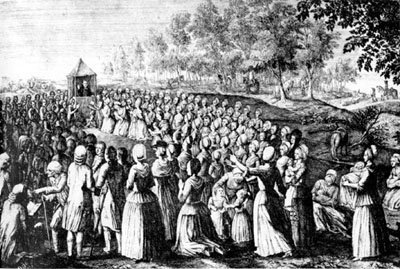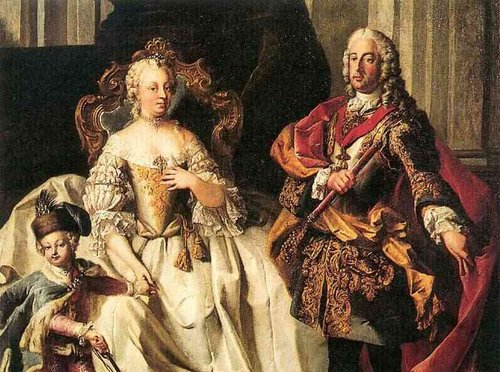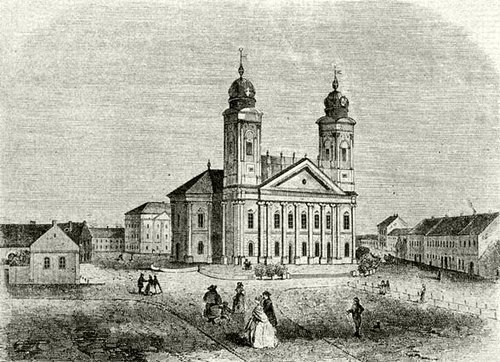The most important confession of the Reformed Church was commissioned by Frederick III, Elector Palatine: two Reformed theologians, Zacharias Ursinus and Caspar Olevianus were responsible for writing the piece. It is important to note that the Peace of Augsburg in 1555 could not contain and allow for the freedom of religion of Calvinism in Germany. Therefore the need arose to extend the treaty to the Reformed followers of Reformation, especially because the members of churches that were not included were so-called 'Vogelfrei' (literally "free birds" in German), meaning they were ostracized. As a responsible ruler, Frederick III could not tolerate the fact that Calvinists were outlaws, as pointed out by Károly Fekete, professor at the Debrecen Reformed Theological University, in his study on the issue.
Soon after its publication in 1563, the Catechism arrived in Hungarian-speaking territories as well, which we can read about in Endre Tóth's study entitled "The History of the Heidelberg Catechism," included in the 2006 edition of the Catechism. In the mid-1560s there was a dispute between Reformed and Lutheran pastors in Hungary over communion. In order to find out the right interpretation, they sought guidance from pastors living in Heidelberg, who included a copy of the Catechism in their reply. From that point on, the book became known in Hungary, and in 1577 was published in Hungarian in Pápa, at the printing press of Dávid Huszár. Sources indicate that the Catechism was so popular that the Synod of Szatmárnémeti in 1646 adopted it as its official book of confession and declared that it "should be kept and taught everywhere."
From generation to generation
"According to 17th- and 18th-century notes and sources, the Catechism really became a popular book. It had several editions, and was used by a large number of congregations either during afternoon worship, or between the morning and afternoon worship in a dedicated public event, where the audience included college students as well as the congregation," says church historian Vilmos Kolumbán of the Protestant Theological Institute in Cluj. The fact that it was a bestseller is underlined by numbers. From its translation till the reign of Joseph II, there were about 50-60 thousand copies of it in circulation, reveals the above-mentioned 2006 edition of the Heidelberg Catechism.

We can learn from the same book that the Catechism was frequently attached to the Hungarian-language Bible, and was considered to be the second most important book after the Scripture. "Everyone knew the Catechism by heart. It significance lies in the fact that it was passed on from generation to generation, providing a framework for the faith, conviction and ethical principles of those generations," says Mihály Márkus, bishop and church historian.
What further increased the book's popularity was the fact that "congregations not only used it as preparation material for confirmation, but also sang the so-called Catechism songs, and the prayer books written to the Catechism also spread in this adapted form. Additionally, there were a variety of booklets written by Hungarian authors for the purpose of confirmation teaching, which – although they did not bear the title "Heidelberg Catechism" – were admittedly inspired by the original work. It was deeply embedded in society," Károly Fekete told reformatus.hu.
Vilmos Kolumbán also emphasizes that the Catechism became widespread in a great number of different forms. "The various editions, translations, corrections, and brief extracts of the confession all served the purpose of practical congregation use, since the complete text – due to its intellectual nature – was not suitable to be used as learning material for young schoolchildren," he says.
The banned confession
It seems, then, that Hungarian Calvinists treasured the Catechism, and they struggled to preserve it in the "Babylonian captivity of the Reformed Church," as detailed in Endre Tóth's study mentioned previously. During the seventy years that followed 1711, that is, until the Patent of Toleration was issued by Joseph II in 1781, Protestants were persecuted, partly because of the Catechism. Maria Theresa (1740-1780) declared that the Heidelberg Catechism was sedition against the Roman Catholic Church because of Question 80, among other things. She prohibited its use as teaching material and issued three decrees (in 1748, 1749 and 1757) which ordered the collection and destruction of all existing copies and forbade the printing of new ones. In the meantime, the original text of the confession could be published freely in Transylvania, but in 1768 Maria Theresa – encouraged by the Transylvanian Roman Catholic bishop – issued yet another decree ordering the collection of all copies there as well.

"Our ancestors, aware of the clarity of the truth and teachings of the Catechism, protected the Reformed faith in the face of the collection decrees issued by Catholic Maria Theresa. It is impossible to determine from such a historical distance whether the resistance was primarily targeted at Maria Theresa and the Habsburgs in general, or rather at Catholicism. These two targets mutually reinforced each other. The petitions asking for the publication of the Catechism, which were submitted by our bishops and Reformed aristocrats, always addressed Maria Theresa, who was also the sovereign of Hungary and therefore the ruler of all Hungarian Christians. This indicates that they were trying to access copies of the Catechism through official channels. When this was denied them, they resorted to cunning tactics, or decided to get the book published abroad or even in an illegal fashion," says Károly Fekete.
Crafty Calvinists
One of the most outstandingly rebellious cities was Debrecen, which replied to the 1748 decree saying that they are "unable to comply with the request." What is more, they printed further copies. This 'tug-of-war' situation went on for a decade, but – to be on the safe side – the Catechism was subsequently published abroad in 1754, to be more precise, in Basel in 3000 copies. It was not easy for the printed books to reach Hungarian soil: the publisher was only able to bring them to Boroszló (today's Wrocław in Poland) in 1756, and from there it was smuggled home by merchants from Debrecen, especially furriers, who were able to hide the copies among the furs, explains Endre Tóth. He adds that the city learned from these complications and returned to publishing the Catechism locally.

The Royal Council of Governor had similar difficulties in other areas of the country when it issued a national decree in 1757, ordering the collection of all copies of the Catechism. One bishop sent out a letter to pastors to deny the request. The Reformed bishop and lay president of Transylvania had no alternative but to collect the copies themselves in their region. However, they came up with a clever solution: they reported that they had gathered some 300 copies, which "could be taken from them, if needed." The Trans-Tisza Church District went even further. They wrote a petition in defence of the Catechism, stating: "if we complied, we would be denying our religion."
Subsequent to the 1781 Patent of Toleration issued by Joseph II, it was only when the Religion Law of 1791 was adopted that the Heidelberg Catechism could be circulated legally. As a result, the original text was published in Nagyszeben (today's Sibiu in Romania) in 1793. "Besides Hungary, the confession enjoyed comparable popularity in the Netherlands and Scotland as well" says Bishop Márkus, "where it was taught and interpreted the same way."
reformatus.hu
Photos from Sulinet.hu, Bor-neked.hu, Mek.oszk.hu, Easyreadsystem.com